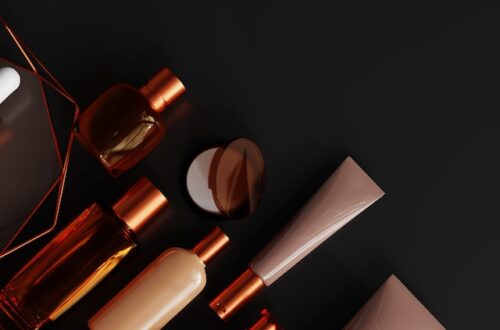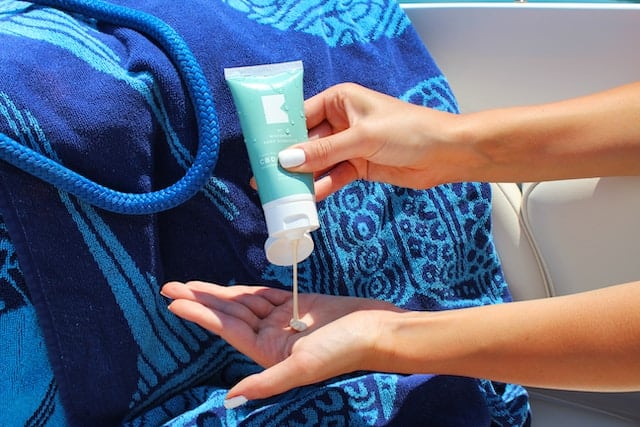
The Importance of Sunscreen: Facts and Myths
The scorching sun’s rays can be unforgiving to our skin, but with the power of sunscreen, we can protect ourselves and maintain healthy, radiant skin.
Sunscreen, often misunderstood or underestimated, plays a vital role in safeguarding our skin from the harmful effects of the sun.
Don’t let the myths fool you – sunscreen is not just a summer accessory but an essential part of our skincare routine. Let’s dive into the facts and uncover the importance of sunscreen in this comprehensive guide.
In today’s blog, we will explore the significance of sunscreen in maintaining healthy skin. We’ll go deeper into its definition, purpose, and how it works to protect our skin from the sun’s harmful rays.
We’ll also address common myths surrounding sunscreen and provide practical tips on choosing the right sunscreen, proper application techniques, and additional sun protection measures.
Join us on this sun-kissed journey as we uncover the truth about sunscreen.
Importance of sunscreen in maintaining healthy skin:
The health of our skin is of paramount importance, and sunscreen plays a crucial role in its maintenance. Sunscreen shields our skin from the damaging effects of ultraviolet (UV) radiation, which can lead to sunburns, premature aging, and even skin cancer.
By incorporating sunscreen into our daily skincare regimen, we actively protect our skin from these harmful effects, ensuring it stays healthy, youthful, and vibrant.
Sunscreen, also known as sunblock or sun cream, is a topical product designed to protect the skin from the sun’s harmful UV radiation. Its primary purpose is to absorb, scatter, or reflect UV rays, preventing them from penetrating the skin and causing damage.
By forming a protective barrier on the skin’s surface, sunscreen acts as a shield against both UVA and UVB rays, safeguarding our skin from their detrimental effects.
How sunscreen works to protect the skin:
Sunscreen works through a combination of physical and chemical mechanisms. Physical sunscreens, also known as mineral or inorganic sunscreens, contain active ingredients like zinc oxide or titanium dioxide, which act as a barrier, reflecting and scattering UV rays away from the skin.
Chemical sunscreens, on the other hand, contain organic compounds that absorb UV radiation and convert it into heat, reducing its impact on the skin.
Different types of sunscreen (chemical vs. physical):
Sunscreen is available in two primary formulations: chemical and physical. Chemical sunscreens contain organic compounds like avobenzone, octinoxate, or oxybenzone, which absorb UV radiation.
Physical sunscreens, on the other hand, utilize mineral ingredients such as zinc oxide or titanium dioxide to create a physical barrier on the skin’s surface.
Each type of sunscreen has its advantages and disadvantages. Chemical sunscreens tend to be lightweight, easily spreadable, and invisible on the skin.
Physical sunscreens, on the other hand, provide immediate protection, are less likely to cause skin irritation, and are suitable for individuals with sensitive skin. In the end, the choice between chemical and physical sunscreen depends on personal preference, skin type, and specific needs.
The Role of Sunscreen in Sun Protection:
Understanding the sun’s harmful rays (UVA and UVB):
To learn about the significance of sunscreen, we must first understand the nature of the sun’s rays. The sun emits two types of ultraviolet (UV) radiation that reach the Earth’s surface: UVA and UVB.
UVA rays have longer wavelengths and can penetrate the deeper layers of the skin, causing premature aging, wrinkles, and sunspots.
UVB rays have shorter wavelengths and primarily affect the outermost layer of the skin, leading to sunburns and an increased risk of skin cancer.
Effects of prolonged sun exposure without sunscreen:
Exposing our skin to the sun without proper protection can have dire consequences. Prolonged sun exposure without sunscreen can result in sunburns, premature aging, the development of dark spots, and an increased risk of skin cancer.
It’s crucial to understand that these effects accumulate over time, making consistent sun protection an essential aspect of maintaining healthy skin.
Sunburns and their relationship to skin cancer:
Sunburns, although seemingly harmless and temporary, should never be taken lightly. Sunburns are a clear indication that the skin has sustained damage from UV radiation.
Over time, repeated sunburns can lead to the development of skin cancer, such as melanoma, the most aggressive form of skin cancer. By preventing sunburns through the use of sunscreen, we significantly reduce the risk of skin cancer.
Debunking Common Myths about Sunscreen:
Myth 1: Darker skin tones don’t need sunscreen:
One prevalent myth is that individuals with darker skin tones are immune to the damaging effects of the sun and do not require sunscreen. This is far from the truth.
While it’s true that darker skin tones have more melanin, which provides some natural protection against UV radiation, everyone, regardless of their skin tone, can experience sun damage and is at risk of skin cancer.
Sunscreen is a necessity for everyone, regardless of their complexion.
Myth 2: Sunscreen prevents the body from producing vitamin D:
Another myth surrounding sunscreen is that it inhibits the body’s ability to produce vitamin D, a vital nutrient for bone health. While sunscreen can reduce the amount of vitamin D synthesized in the skin, it is not the sole factor influencing its production.
Spending a few minutes in the sun without sunscreen before applying it or obtaining vitamin D from dietary sources can ensure an adequate intake while still protecting the skin.
Myth 3: Sunscreen is only needed on sunny days:
Contrary to popular belief, UV radiation can penetrate through clouds and reach our skin even on overcast or rainy days.
Therefore, sunscreen should be incorporated into our daily skincare routine regardless of the weather conditions. UV rays are present year-round, and protection against them is crucial for maintaining healthy skin.
Choosing the Right Sunscreen:
SPF (Sun Protection Factor) and its significance:
When selecting a sunscreen, the Sun Protection Factor (SPF) is an important factor to consider. SPF measures the level of protection a sunscreen offers against UVB rays, which primarily cause sunburns.
It indicates the time it takes for UVB radiation to redden the skin compared to unprotected skin. It’s generally recommended to use sunscreen with an SPF of 30 or higher, as it provides adequate protection against UVB rays.
Broad-spectrum sunscreen and its benefits:
In addition to SPF, it’s crucial to choose a sunscreen labeled “broad-spectrum.” This designation indicates that the product offers protection against both UVA and UVB rays.
UVA rays contribute to premature aging and can penetrate the skin more deeply, while UVB rays primarily cause sunburns. Opting for a broad-spectrum sunscreen ensures comprehensive protection against both types of UV radiation.
Factors to consider when selecting sunscreen:
Several factors come into play when choosing the right sunscreen for your skin type and specific needs. For individuals with sensitive skin, fragrance-free or hypoallergenic formulations may be more suitable.
Oily or acne-prone skin can benefit from non-comedogenic and oil-free options that won’t clog pores. It’s also important to consider activities and environmental conditions.
Water-resistant and sweat-resistant sunscreens are recommended for outdoor sports and water activities, while winter sports require sunscreen that provides protection against the reflection of UV rays from snow.
Proper Application of Sunscreen:
Applying sunscreen correctly for maximum effectiveness:
Proper application of sunscreen is crucial to ensuring maximum effectiveness. Start by applying sunscreen generously to all exposed areas of the skin.
Use at least a teaspoon (5 milliliters) for the face and a shot glass (30 milliliters) for the body. Don’t forget commonly overlooked areas like the ears, back of the neck, hands, and feet.
Areas commonly missed during sunscreen application:
Certain areas of the body are frequently overlooked during sunscreen application. The delicate skin on the lips, the scalp (if not covered by hair), and the tops of the ears are areas that are particularly vulnerable to sunburn and skin damage.
Use a lip balm with SPF, wear a hat, or use sunscreen spray for the scalp, and remember to cover the tops of the ears.
Reapplication Guidelines and Frequency:
To maintain optimal protection, sunscreen should be reapplied regularly. As a general guideline, reapply sunscreen every two hours, or more frequently if you’re swimming, sweating profusely, or toweling off.
Even water-resistant sunscreens can wear off with time, so be diligent in reapplying to ensure continuous protection throughout the day.
Sunscreen and Anti-Aging:
Sunscreen as a preventative measure against premature aging:
If there’s one anti-aging secret that dermatologists unanimously agree upon, it’s the consistent use of sunscreen. UV radiation is one of the leading causes of premature aging, including wrinkles, fine lines, age spots, and sagging skin.
By incorporating sunscreen into your daily skincare routine, you shield your skin from these harmful effects, helping to maintain a youthful and radiant complexion.
Effects of UV rays on collagen and elastin production:
UV radiation can wreak havoc on the production of collagen and elastin, two proteins crucial for maintaining skin elasticity and firmness.
Over time, prolonged exposure to UV rays can lead to a breakdown of these proteins, resulting in the formation of wrinkles and a loss of skin resilience.
Using sunscreen creates a barrier of protection that lessens UV radiation’s harm while maintaining the production of collagen and elastin.
Benefits of long-term sunscreen use:
Consistent and long-term sunscreen use can have numerous benefits for the skin. It helps prevent the development of photoaging signs, including wrinkles, age spots, and uneven skin tone.
By maintaining the integrity of the skin’s structure, sunscreen contributes to a smoother, more youthful complexion.
Additionally, regular sunscreen use minimizes the risk of developing certain types of skin cancer, ensuring the overall health of your skin.
Sunscreen and Skin Cancer Prevention:
The link between UV radiation and skin cancer:
The connection between UV radiation and skin cancer is well-established. Prolonged exposure to UV radiation, particularly from the sun, significantly increases the risk of developing skin cancer.
Skin cancer is the most common type of cancer globally, and protecting our skin from UV radiation through the use of sunscreen is a crucial preventive measure.
Role of sunscreen in reducing the risk of skin cancer:
Sunscreen acts as a vital tool in reducing the risk of skin cancer. By providing a barrier against UV radiation, sunscreen helps prevent DNA damage that can lead to the development of skin cancer cells.
Incorporating sunscreen into your daily routine is an effective way to safeguard your skin and reduce the risk of skin cancer.
Statistics and evidence supporting the importance of sunscreen:
Statistics and evidence consistently support the importance of sunscreen in preventing skin cancer.
According to the Skin Cancer Foundation, regular daily use of an SPF 15 or higher sunscreen reduces the risk of developing squamous cell carcinoma by about 40% and melanoma by 50%.
These findings highlight the significant role sunscreen plays in protecting against skin cancer and emphasize its importance as a preventive measure.
Sunscreen for Different Skin Types:
Sunscreen recommendations for sensitive skin:
Individuals with sensitive skin may find it challenging to find a sunscreen that doesn’t irritate their skin.
Look for sunscreens labeled “fragrance-free” and “hypoallergenic,” as these formulations are less likely to cause irritation. Physical sunscreens with zinc oxide or titanium dioxide are also gentle options for sensitive skin.
Sunscreen options for oily or acne-prone skin:
For those with oily or acne-prone skin, it’s essential to choose sunscreens that are non-comedogenic and oil-free.
These formulations won’t clog pores or exacerbate acne breakouts. Additionally, lightweight and gel-based sunscreens can provide a mattifying effect, reducing excess shine on the skin.
Sunscreen considerations for children and infants:
Children and infants have delicate and sensitive skin, requiring special consideration when it comes to sunscreen.
Opt for sunscreens specifically formulated for children, as they are less likely to contain irritants. Look for broad-spectrum, physical sunscreens with a high SPF.
Additionally, it’s advisable to keep infants under six months old out of direct sunlight and dress them in protective clothing, using sunscreen as a last resort.
Additional Sun Protection Measures:
The importance of seeking shade during peak sun hours:
While sunscreen is crucial, it’s equally important to seek shade during the peak sun hours, typically between 10 am and 4 pm when the sun’s rays are the strongest.
Spending time in the shade reduces overall sun exposure and minimizes the risk of sunburn and other skin damage.
Wearing protective clothing and accessories:
In conjunction with sunscreen, wearing protective clothing can provide an additional layer of defense against UV radiation.
Opt for lightweight, long-sleeved shirts, wide-brimmed hats, and sunglasses with UV protection.
Clothing with a high Ultraviolet Protection Factor (UPF) can further enhance sun protection.
Sunglasses and their role in eye protection from UV rays:
Our eyes are susceptible to UV damage as well. Wearing sunglasses with proper UV protection helps shield the eyes from harmful UV rays.
Look for sunglasses labeled with 100% UV protection or UV400, ensuring they block both UVA and UVB rays.
This simple habit can help prevent cataracts, macular degeneration, and other eye conditions caused by excessive UV exposure.
Sunscreen and Environmental Impact:
Understanding the environmental effects of certain sunscreen ingredients:
While sunscreen is essential for our skin’s protection, some sunscreen ingredients can have adverse effects on the environment, particularly marine ecosystems.
Certain chemicals found in sunscreen, such as oxybenzone and octinoxate, have been shown to contribute to coral bleaching and harm marine life.
It’s essential to choose sunscreen options that are eco-friendly and reef-safe to minimize environmental impact.
Eco-friendly and reef-safe sunscreen options:
To reduce the environmental impact, opt for mineral-based sunscreens that use zinc oxide or titanium dioxide as active ingredients.
These physical blockers are less harmful to marine life and ecosystems. Additionally, look for sunscreens labeled “reef-safe” or “ocean-friendly,” indicating that they do not contain chemicals known to harm coral reefs.
Sunscreen for Different Activities and Seasons:
Sunscreen choices for outdoor sports and water activities:
Engaging in outdoor sports and water activities increases the need for durable and water-resistant sunscreens.
Look for sunscreens specifically designed for sports or water resistance, which provide extended protection even when exposed to sweat or water.
Don’t forget to reapply after swimming or excessive sweating.
Sunscreen for winter and skiing conditions:
Sun protection should not be limited to sunny days or warm weather. Even in winter, UV radiation can be harmful, particularly in snowy conditions where UV rays reflect off the snow.
Use a broad-spectrum sunscreen with a high SPF, apply it to all exposed areas, and wear protective accessories like goggles and lip balm with SPF for skiing and other winter activities.
Travel considerations and sun protection:
Whether you’re traveling to tropical destinations or exploring new cities, sun protection should be a priority. Consider the climate and activities of your travel destination when selecting a sunscreen.
Pack travel-sized bottles or carry-on-friendly options to ensure you have adequate sun protection throughout your journey.
Common Sunscreen Mistakes to Avoid:
Applying an insufficient amount of sunscreen:
One common mistake is applying too little sunscreen, which compromises its effectiveness. Remember to apply a generous amount to ensure proper coverage and protection. Don’t be stingy when it comes to sunscreen application.
Relying solely on makeup or moisturizer with SPF:
While some makeup and moisturizers contain SPF, relying solely on these products for sun protection is not sufficient. Often, the SPF in makeup or moisturizers is lower than the recommended SPF 30 or higher.
Make it a habit to use dedicated sunscreen products to ensure adequate sun protection.
Using expired or improperly stored sunscreen:
Sunscreen has an expiration date for a reason. Expired sunscreen may lose its effectiveness and not provide the intended protection.
Additionally, improper storage, such as exposing sunscreen to high temperatures or leaving it in direct sunlight, can degrade its quality. Always check the expiration date and store sunscreen in a cool, dry place.
Sunscreen and its Role in Post-Sun Care:
Soothing sun-damaged skin with after-sun products:
Even with proper sun protection, our skin may still experience some sun damage. After-sun products can help soothe and nourish the skin, providing relief from sunburn and reducing inflammation.
Look for after-sun products containing aloe vera, chamomile, or cucumber, as these ingredients have calming properties.
Moisturization and hydration after sun exposure:
Sun exposure can dehydrate the skin, leading to dryness and flakiness. After spending time in the sun, prioritize moisturizing and hydrating your skin.
Use a moisturizer or body lotion containing ingredients like hyaluronic acid, glycerin, or ceramides to replenish moisture and restore the skin’s barrier function.
Sunscreen Safety Tips:
Checking for potential allergic reactions to sunscreen ingredients:
While sunscreen is generally safe for most individuals, some may experience allergic reactions to certain ingredients. If you have sensitive skin or a history of allergies, perform a patch test before applying sunscreen to a larger area.
Apply a small amount of sunscreen to the inner forearm and observe for any adverse reactions within 24 hours.
Sunscreen recommendations for individuals with certain medical conditions:
Individuals with specific medical conditions, such as lupus or rosacea, may have additional considerations when choosing a sunscreen.
Consult with a dermatologist who can recommend suitable sunscreen options tailored to your specific needs and medical condition.
Sunscreen usage during pregnancy and for nursing mothers:
Pregnant women and nursing mothers can safely use sunscreen to protect their skin. Look for sunscreens without chemical filters like oxybenzone and avobenzone if you prefer to avoid them during pregnancy or breastfeeding.
Zinc oxide and titanium dioxide-based sunscreens are generally considered safe options.
Conclusion:
Sunscreen is an essential component of any skincare regimen. By addressing common myths and emphasizing the importance of sunscreen, we empower ourselves to make informed choices about sun protection.
By selecting the right sunscreen, applying it correctly, and incorporating it into our daily habits, we can ensure optimal sun protection, maintain skin health, and reduce the risk of sun damage and skin cancer.
Incorporating sunscreen into our daily habits is a simple yet powerful way to safeguard our skin’s health and overall well-being. Sun protection is not a seasonal concern but a year-round commitment. By doing so, you minimize the risk of sun damage and promote long-term skin wellness.


You May Also Like

Understanding AHA vs. BHA: Key Differences You Need To Know
6 October 2023
Secrets For Glowing Skin On a Budget
8 July 2023

